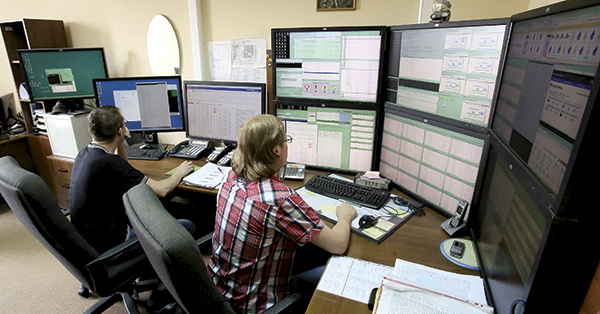
It’s hardly possible to find a modern family not relying on banking cards for their day to day spending. Over 12.3m cards are in circulation in Belarus (up 500,000 over the last 12 months); in 2012, Belarusians held just 9.9m cards. No doubt, non-cash payments are convenient, especially now that most retailers accept them. They are great for travelling and allow us to access allowances, salaries, scholarships, pensions and wages with ease. However, despite it appearing ‘easy’ (we think nothing of paying for souvenirs abroad by VISA), the process is quite complicated. When funds are taken from your account, they need to be sent to the exact ‘receiving’ bank account, with processing centres acting as bridges between countries and banks. Card validity also needs to be verified, alongside the presence of adequate funds. International payments are just one of numerous avenues of banking activity.
Some banks — like Priorbank and Belvnesheconombank — have their own processing centres, but most financial institutions in Belarus use the Banking Processing Centre: it serves around 78 percent of all Belarusian cards and a similar share of trade and service organisations which use payment terminals (connected to the Centre’s software complex).
Work is continuous, with transfers being processed, including inter-bank settlements and those conducted at terminals, info-kiosks and cash machines. The Centre’s data processing systems work 24/7, processing up to 5.5m inquiries daily. In addition, over 10,000 banking cards are activated each day, including data held within magnetic strips and micro-processors. Meanwhile, non-contact cards, not requiring a terminal (only a special reader) are becoming more widespread. Specialists forecast that mobile phones, watches and other devices using a micro-processor with a non-contact interface could become commonplace.

The Centre acts as a public receiving office (also known as client servicing). A single operator can process over 10,000 calls monthly, while the Centre receives 450-490,000 in total each month. Employing around 40 employees, it takes most calls during the day, with a few at night. Specialists can block a card (at a holder’s request) if lost, or unblock a card after the user makes a three-time mistake in his PIN-code. Moreover, employees can inform of account balances and give advice on whether an operation has been carried out successfully (if a client has doubts).
The Centre also helps trade and service organisations find out about their sales figures and can send repair technicians for terminals. Information support is not the main activity but the Centre aims to expand the number of places accepting card payment and is responsible for infrastructure development — providing terminals and cash machines to banks and other organisations.
Trade and service enterprises — including individual entrepreneurs — can choose the best scheme for receiving and servicing equipment (taking into consideration their abilities and plans). Moreover, small businesses can purchase relatively cheap mobile terminals — known as M-POS — for use with smartphones and the Internet. The Banking Processing Centre already has 19 offices in regional centres and other large cities across the Republic.
The Deputy General Director of the Banking Processing Centre, Yelena Odinochenko, explains that a group of risk-analysts daily work at the Centre, using specialised software to detect suspicious operations. If a card operation occurs in Belarus and then, an hour later, in Singapore (not online but at an ordinary shop or cash machine), they are alerted. Evidently, it’s impossible to travel from Belarus to Singapore in such a short period of time, indicating criminal activity. In this situation, the Centre would block the card and inform the bank.
In analysing fraud operations, the Centre may learn of card owners’ data being stolen in great volumes in a certain country. In this case, this country receives the status of a ‘high risk state’. If operations involving great sums are conducted outside Belarus in a high risk state, they are automatically viewed as suspicious. When the Centre’s systems detect cases of this kind, cards are immediately blocked and banks informed of the need to investigate.
Belarus’ figures:
As of July 1st, 42.7 percent of cards in Belarus were BELCARD, and 43.8 percent were VISA, with 13.5 percent run by Mаstercard. American Express cards are soon to be introduced for the first time in Belarus, offering additional services. In 2009, just 41 percent of card operations were cashless; now, this figure has reached 75 percent.
By Anna Osokina











